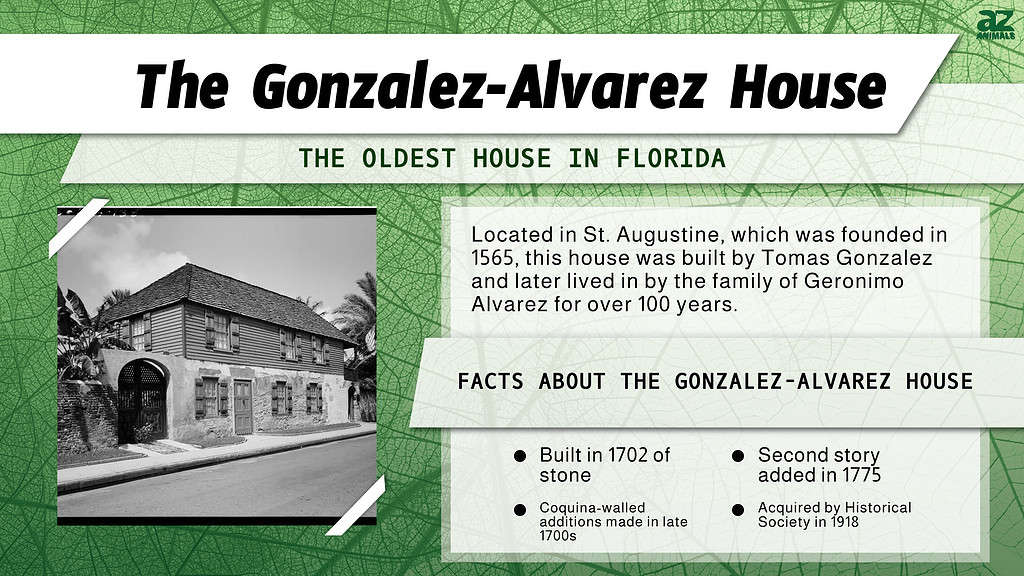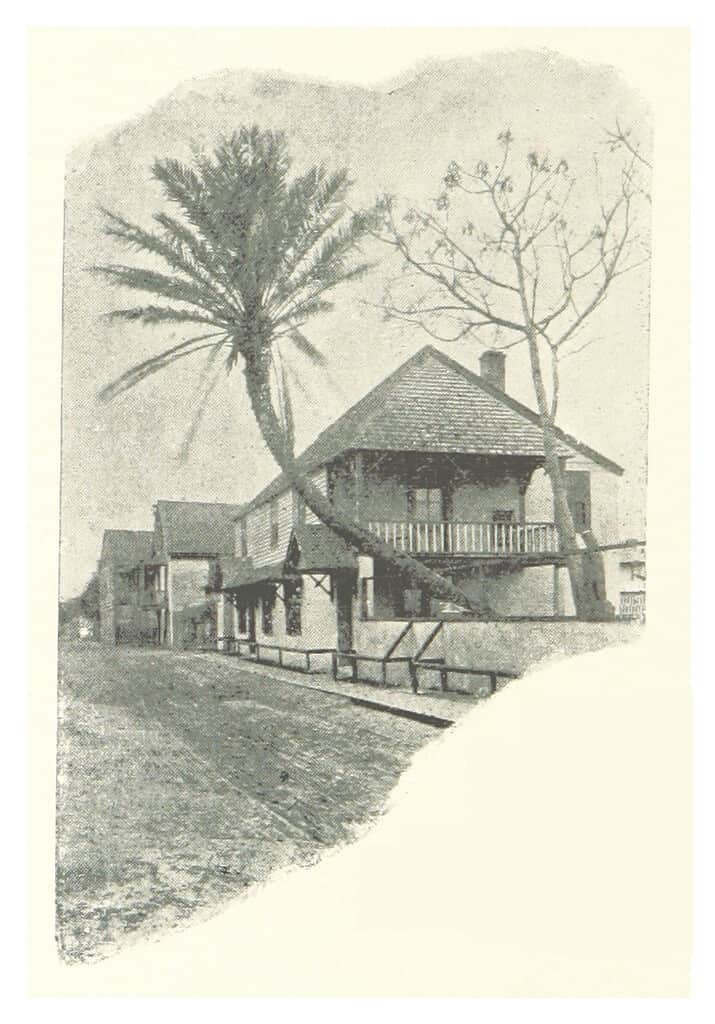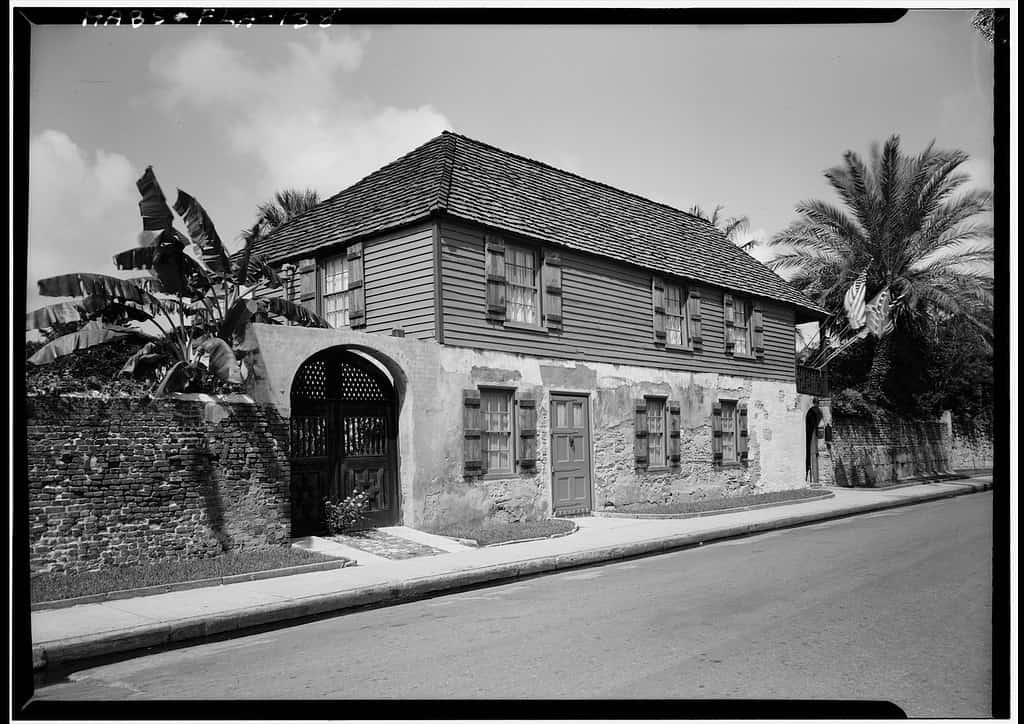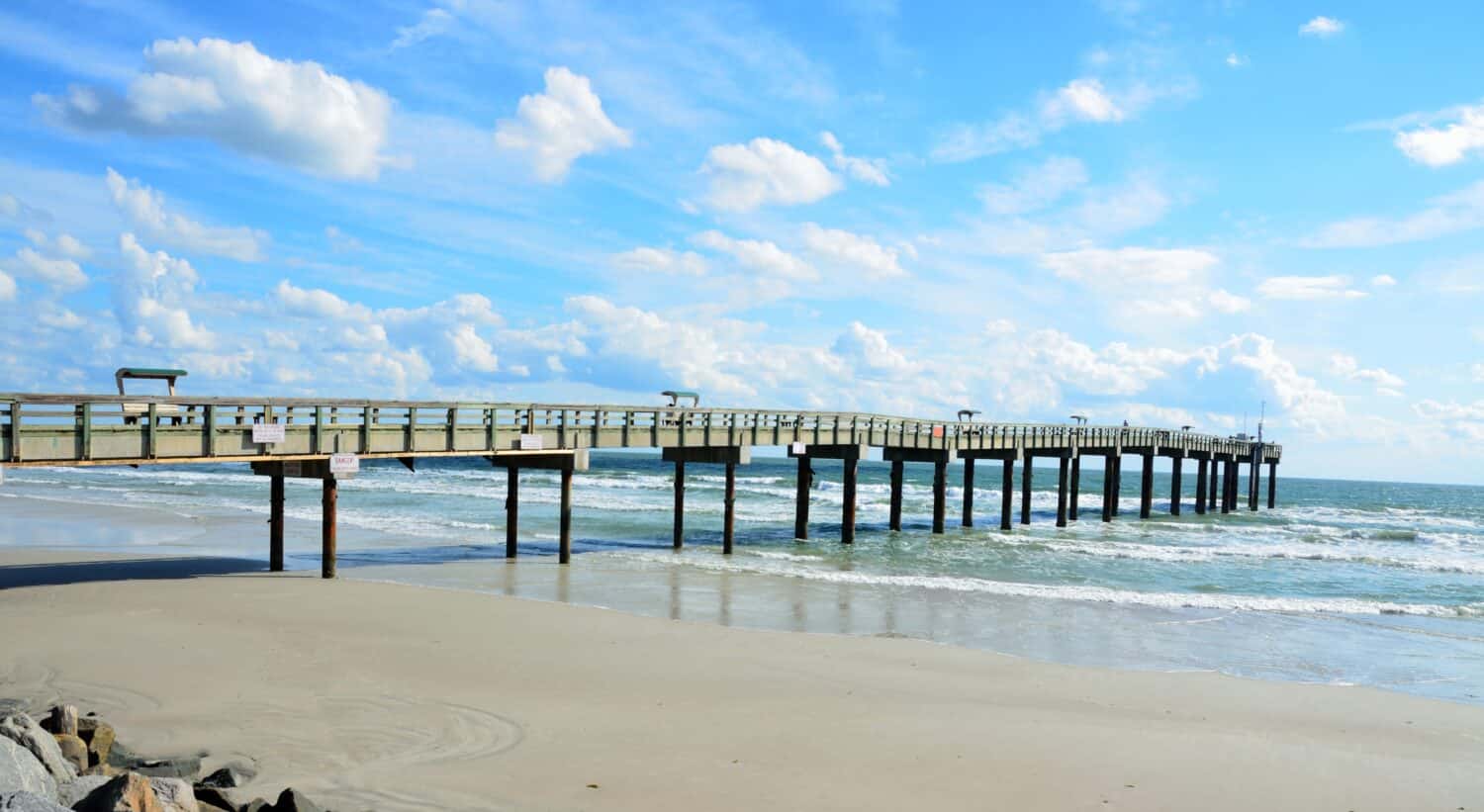
The González-Alvarez House, better known as The Oldest House, is (as the name suggests) the oldest house in Florida. The house is in St. Augustine, the oldest continuously-inhabited European settlement in the continental United States.
The Oldest House is the oldest remaining Spanish colonial dwelling in St. Augustine. Some have labeled it the oldest house in the nation, though many historians dispute that claim.

The Gonzalez-Alvarez House (“The Oldest House”) has stood in St. Augustine since the early 1700s.
©Ebyabe / CC BY-SA 3.0 – License
The Founding of St. Augustine
Located on northeast Florida’s Atlantic coast, St. Augustine was founded on September 8, 1565, by Spanish admiral Pedro Menéndez de Avilés. The explorer named the settlement “San Agustín” because they landed on August 28, the Feast Day of St. Augustine of Hippo. The city has been continuously inhabited since September 1565.

A statue of Pedro Menéndez de Avilés, founder of St. Augustine.
©Upstateherd / CC BY-SA 4.0 – License
The Construction of The Oldest House
González
Construction on The Oldest House began in 1702. Tomás González y Hernández is the first known resident of the house, with records dating back to 1727. The house was a stone house built in a rectangle. The walls were constructed of coquina, a soft stone made almost entirely of broken shells. González lived in the house with his family for nearly 40 years before moving to Cuba in 1763. He and many other Spanish residents left St. Augustine when Spain ceded Florida to England. Spain was allied with France in the French & Indian War. The British prevailed in the conflict, and Spain surrendered Florida as part of the peace treaty.
Peavett
The house remained empty for more than a decade after González left until a wealthy British soldier, Sergeant-Major Peavett, purchased it in 1775. Peavett added a second story to the house. The second story has constructed with a wood frame.
After Peavett’s death in 1786, his wife remarried. Her new husband’s dire financial situation forced the sale of the house to cover his debts.
Alvarez
Geronimo Alvarez purchased the house and made the final changes that brought it into its present form. Alvarez, a Spaniard, added coquina-walled additions to the house in the classic Spanish style. Alvarez’s descendants would live in the house for nearly a century after he purchased it.

This illustration shows what the González-Alvarez House looked like in 1889.
©British Library / Public Domain – License
The Oldest House tells the colonial history of Florida in its structure. Both Spanish and British influences are clearly seen in the house’s construction.
The house changed hands several times through the rest of the nineteenth century. The St. Augustine Historical Society acquired the house in 1918. The organization still owns it today. The house was recognized as a National Historic Landmark in 1970.
It is difficult to comprehend just how much history transpired during the years this house has stood in St. Augustine. The house predates the United States itself by nearly three-quarters of a century.
The house has stood strong through wars and weather. It has remained steadfast through political, cultural, and technological shifts. This house stood when the Declaration of Independence was signed and when the iPhone was invented. It is a remarkable piece of history open to all who visit or live in St. Augustine.

Here is a look at the González-Alvarez House in September 1961.
©Library of Congress Prints and Photographs Division / Public Domain – License
Visiting The Oldest House
The Oldest House is part of The Oldest House Museum Complex and Gardens operated by the St. Augustine Historical Society. It is located at 14 St. Francis Street in St. Augustine. The Oldest House is open daily from 10:00 a.m. to 5:00 p.m., with tours offered every half hour throughout the day. Along with access to The Oldest House, museum guests can stroll the ornamental gardens, visit the St. Augustine Surf Culture Museum, explore the Webb Museum (the oldest structure built specifically as a museum in Florida), and more.

This information plaque stands outside the Gonzalez-Alvarez House.
©Jose Alberto Suarez / CC BY-SA 3.0 – License
Other St. Augustine Sites
Along with visiting the museum complex, you can head for the beach. St. Augustine offers 42 miles of pristine beaches. You can also take a trolley tour through town, check out the World Golf Hall of Fame & Museum, visit the oldest wooden schoolhouse in the country, check out the Lightner Museum, and much more. Your trip to St. Augustine is sure to be one that you’ll remember for a very long time!

St. Augustine has over 40 miles of beautiful beaches.
©Paul Brennan/Shutterstock.com
Where is The González–Álvarez House Located on a Map?
Located at 14 St. Francis Street in St. Augustine, Florida, the González–Álvarez House, commonly referred to as The Oldest House, is a renowned historic house museum. Its construction dates back to around 1723, making it widely regarded as the oldest standing house in St. Augustine.
Here is The González–Álvarez House on a map:
The photo featured at the top of this post is © Ebyabe / CC BY-SA 3.0 – License / Original
Thank you for reading! Have some feedback for us? Contact the AZ Animals editorial team.






